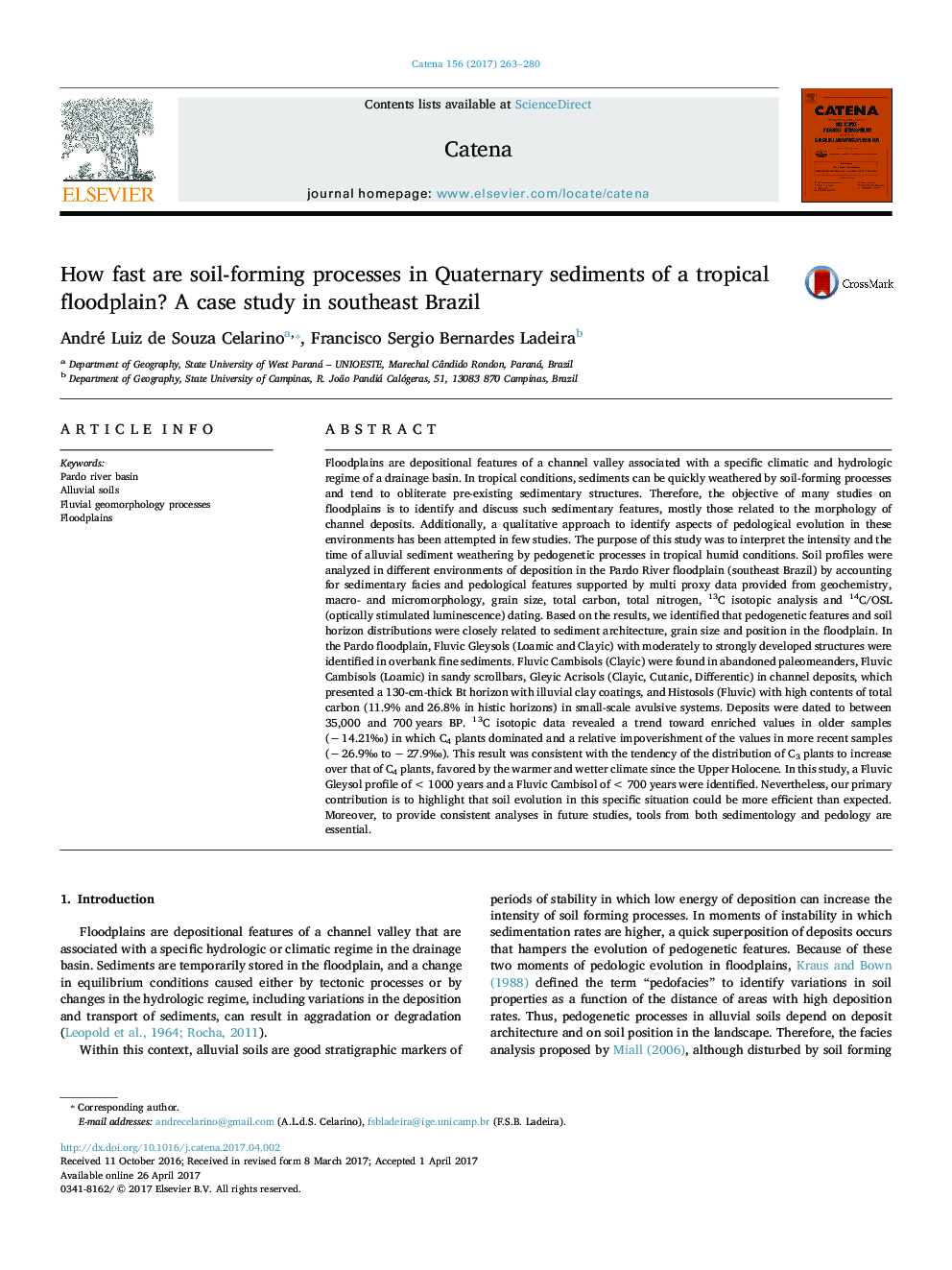| کد مقاله | کد نشریه | سال انتشار | مقاله انگلیسی | نسخه تمام متن |
|---|---|---|---|---|
| 5770002 | 1629198 | 2017 | 18 صفحه PDF | دانلود رایگان |
- Sediments on floodplains were analyzed to identify pedogenetic features.
- Soil horizons were identified in <Â 1.000 years of pedogenetic evolution.
- Soil evolution is related to grain size and the position in the floodplain.
Floodplains are depositional features of a channel valley associated with a specific climatic and hydrologic regime of a drainage basin. In tropical conditions, sediments can be quickly weathered by soil-forming processes and tend to obliterate pre-existing sedimentary structures. Therefore, the objective of many studies on floodplains is to identify and discuss such sedimentary features, mostly those related to the morphology of channel deposits. Additionally, a qualitative approach to identify aspects of pedological evolution in these environments has been attempted in few studies. The purpose of this study was to interpret the intensity and the time of alluvial sediment weathering by pedogenetic processes in tropical humid conditions. Soil profiles were analyzed in different environments of deposition in the Pardo River floodplain (southeast Brazil) by accounting for sedimentary facies and pedological features supported by multi proxy data provided from geochemistry, macro- and micromorphology, grain size, total carbon, total nitrogen, 13C isotopic analysis and 14C/OSL (optically stimulated luminescence) dating. Based on the results, we identified that pedogenetic features and soil horizon distributions were closely related to sediment architecture, grain size and position in the floodplain. In the Pardo floodplain, Fluvic Gleysols (Loamic and Clayic) with moderately to strongly developed structures were identified in overbank fine sediments. Fluvic Cambisols (Clayic) were found in abandoned paleomeanders, Fluvic Cambisols (Loamic) in sandy scrollbars, Gleyic Acrisols (Clayic, Cutanic, Differentic) in channel deposits, which presented a 130-cm-thick Bt horizon with illuvial clay coatings, and Histosols (Fluvic) with high contents of total carbon (11.9% and 26.8% in histic horizons) in small-scale avulsive systems. Deposits were dated to between 35,000 and 700 years BP. 13C isotopic data revealed a trend toward enriched values in older samples (â 14.21â°) in which C4 plants dominated and a relative impoverishment of the values in more recent samples (â 26.9â° to â 27.9â°). This result was consistent with the tendency of the distribution of C3 plants to increase over that of C4 plants, favored by the warmer and wetter climate since the Upper Holocene. In this study, a Fluvic Gleysol profile of < 1000 years and a Fluvic Cambisol of < 700 years were identified. Nevertheless, our primary contribution is to highlight that soil evolution in this specific situation could be more efficient than expected. Moreover, to provide consistent analyses in future studies, tools from both sedimentology and pedology are essential.
Journal: CATENA - Volume 156, September 2017, Pages 263-280
